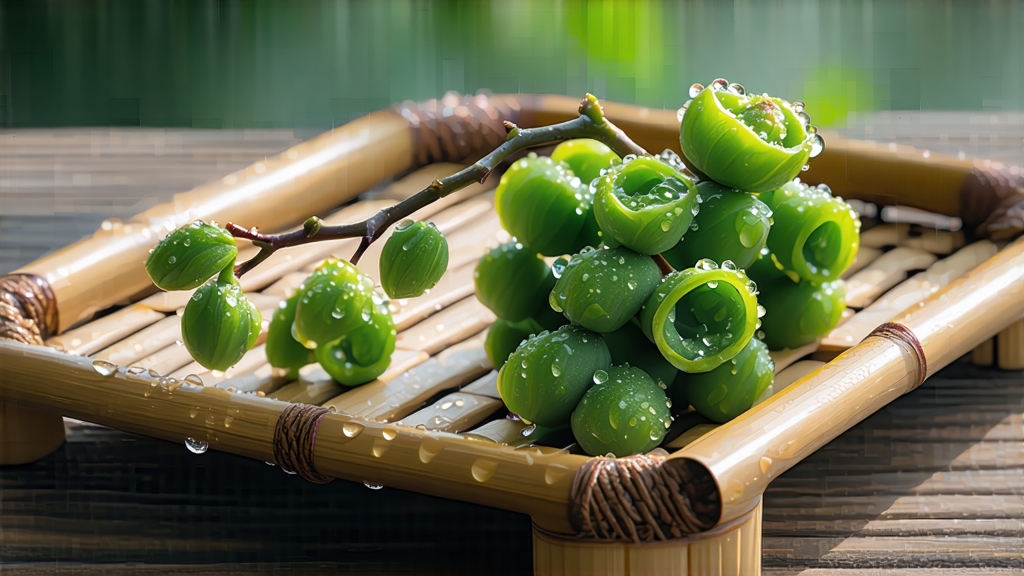
Biluochun, whose name translates literally to “Green Snail Spring,” is one of China’s ten most celebrated teas, yet it remains a quiet miracle even to many seasoned tea travelers. Grown on the mist-locked, fruit-tree-capped hills that ring East China’s Taihu Lake, this emerald-green tea is prized for its improbably tiny spiral shape, downy silver tips, and a fragrance so naturally floral that early Qing-dynasty poets thought the leaves had been scented with stolen orchard blossoms. In truth, no perfume is added; the tea simply absorbs the scent of apricot, peach, and plum flowers growing intermixed among the tea bushes, a happy botanical accident that centuries of craft have learned to preserve.
History and Legend
The first written record appears in 1675, when the Kangxi Emperor sampled the tea during a southern inspection tour. Allegedly he found the name “Xia Sha Ren Xiang”—literally “scary fragrance”—too inelegant for an imperial gift, so he rechristened it Biluochun, referencing the shell-like curl and the season of earliest picking. Modern scholars trace the cultivar back to the late Ming, when monks at Dongting Mountain’s temples began firing green tea in small woks to stop oxidation, rolling the hot leaf into tight spirals that resisted the humid lake air during transport down the Grand Canal to Suzhou’s silk markets. By the 19th century Biluochun had eclipsed Songluo and Longjing in price at the Canton trade fairs, fetching its weight in silver when shipped to Tsarist Saint Petersburg or London’s Strand tea auctions.
Micro-Terroirs and Cultivars
Authentic Biluochun comes only from the Dongting range—Dongshan (East Mountain) and Xishan (West Mountain)—two limestone islands that rise from Taihu’s shallows. The lake acts as a giant heat reservoir, creating nightly fogs that slow photosynthesis and concentrate amino acids, especially L-theanine, which gives the tea its umami sweetness. Within five square kilometers growers recognize at least three micro-zones:
- Mingyue Bay, facing east, where morning sun burns off mist quickly, yielding brisk, jasmine-like aromatics.
- Shigong Ridge, whose iron-rich purple soil produces smaller buds with a hint of spice.
- Linwu Cave, a shaded north slope where leaves stay greener, delivering a creamy, almost white-tea softness.
The main cultivar is a local seed-selected biotype, Dongting Qunti, characterized by tiny, thick leaves that tolerate low-temperature pan-firing. Since 2003 clonal selections such as Fuding Dabaicha and Wuniuzao have been grafted onto Dongting rootstock to extend the picking window, but connoisseurs still prefer the original Qunti for its slower growth and more complex cup.
Harvest Calendar
Plucking begins when the lake’s surface temperature holds steady at 10 °C, usually between the Qingming festival (early April) and Grain Rain (late April). Only the “flag-and-bud”—a half-open leaf still clasping its downy tip—is taken. Top-grade Mingqian (pre-Qingming) lots may require 70,000 buds to yield 500 g of finished tea, all picked before 10 a.m. while dew remains so that cell turgor is high and oxidation enzymes stay dormant.
Crafting the Spiral
Within minutes of plucking, the fragile shoots are spread in bamboo trays no thicker than 2 cm and wilted for 30–45 minutes under lakeside shade. The goal is to reduce moisture to 68 % without letting the edges redden. Next comes the kill-green step, performed on a cast-iron wok held at 180 °C. A single craftsman controls 250 g of leaf, tossing and pressing with bare palms in a rhythmic clap that sounds like muted applause. After three minutes the temperature is dropped to 120 °C and the rolling phase begins: the picker squeezes handfuls of hot leaf against the wok wall, coiling them into the signature snail shape while rupturing just enough cells to release fragrant sap. The final low-fire drying lasts 20 minutes at 70 °C, reducing moisture to 5 % and setting the curl. When done correctly the leaf resembles a tiny jade snail shell, silvery fuzz intact, snapping cleanly when bent.
Chemical Signature
Gas-chromatography studies show that Biluochun carries 30 % more geraniol and linalool than other Chinese greens,